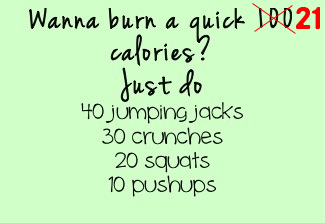Gym Lingo 101
Barbell: A long metal pole that allows you to attach weighted plates to either end of it to increase the weight of the pole. The standard weight of an Olympic barbell is 45 lbs, though they come in different sizes and weights.
Bench: Bench Press. This exercise is performed by lying on your back on a bench and lowering a weight onto your chest, then pushing it back up into the air to fully extend your arms.
Body Weight: Body weight exercises refer to exercises that are done without any additional weights. They are typically done to practice good form before adding weights or as cardio. Some examples include squats, lunges, jump rope, etc.
Box: “The Box” is typically a Crossfit term used to describe a Crossfit gym. Majority of Crossfit gyms are located in warehouses or other large warehouse like buildings.
Bumper Plates: These plates are all the same size regardless of their weight. They’re designed for Olympic lifting so the athlete becomes accustomed to using plates of a certain size, generally 45 lbs.
Cardio: A classification for any sort of cardiovascular activity that increases your heart rate. This includes running, zumba, kickboxing, rowing, etc.
Compound lift: An exercise that involves more than one group of muscles at a time. Some examples are squats, dead lifts, snatches, etc.
Crossfit: A type of fitness that involves cross training – hence the name. Crossfit is usually performed in a “box” in a warehouse using WODs that are typically named after people. They involve a variety of different exercises from pushing sleds to overhead squats to jump roping.
Deadlift: A compound movement that involves picking up a heavy weight off the floor and returning it there. Please don’t use this description to attempt the move.
Dropset: After completing and exercise with a certain weight, you drop the weight and continue the exercise. For example, you start with 20 pound weights for a certain amount of reps, then use 17.5 pound weights, then 15 pound weights, all without a break in between.
Dumbbell: A weight designed to be held with one hand. These vary in weight and size and often have the weight written on the side of the dumbbell.
Free Weights: This refers to the dumbbells and barbells located throughout the gym.
Machines: Just like what it sounds like: machines located throughout a gym that helps isolate certain muscles. They’re good for accessory work but are often looked down upon because they fail to help build stabilizing muscles like free weights do.
Oly: Short for Olympic lifting. These include many compound movements such as squats, snatches, jerks, etc.
PR: Personal Record. This can be the fastest mile that person has run, their heaviest deadlift, the highest reps of a weight, etc.
Plates: Circular weights that can be attached to the end of barbells to increase the weight of the barbell. Plates can also be used on their own without a barbell to add weight to any exercise.
Rack: The Rack, The Cage, The Power Rack, etc. are all names for an assistance piece of equipment. These are usually over 6 feet in height and designed to allow people to add weights to their barbells for movements like squats or overhead presses. They’re ideal for this because often a person can squat very heavy weights but cannot lift that weight onto their back without assistance.
Rep: Repetition. This is how many times an exercise is performed in a set. For example, if you did 10 lunges you would have performed 10 reps.
Set: Sets of an exercise. For example, if you did 10 lunges in a row, rested a few seconds, then did another 10 lunges in a row you would have performed two sets of 10 reps of lunges.
Sprint: A cardio term used when someone goes as fast as they can for a limited amount of time. This can be done in running, on a bicycle, etc.
Supersets: Pairing two exercises together and doing them back to back. For example, if you’re supersetting push ups and pull ups you would perform a set of push ups and immediately follow it with a set of pull ups and then rest.
WOD: Workout of the Day. If you’re a Crossfitter these are normally named after people and involve a series of exercises that are performed for time.

